Thousand years of dragon tales at Thang Long Imperial Citadel
With four thousand years of building and defending the country, the imperial citadel remains inspiring in telling the epic history of Thang Long-Hanoi.
Foreign visitors to the UNESCO World Heritage Site of the Thang Long Imperial Citadel in Hanoi are impressed with its rare archaeological relics, mostly the image of dragons which has gone to Vietnam's history for centuries.
| Travelers on a night tour of the Thang Long Imperial Citadel. Photo: Hanoitourist |
Depictions of dragons - a symbol of power in Eastern cultures - have been found on artifacts from the ancient capital, including swords, utensils, seals, terracotta, gold, bronze, jade, and wood, as well as on ceremonial objects and architectural features.
Symbol of ultimate power in Eastern cultures
Although they existed in earlier periods of Vietnam's history, dragon motifs became more common after the emergence of the site called Thang Long, the name given to Dai La by Emperor Ly Cong Uan when he moved the capital from the mountainous Hoa Lu to the land on the great Nhi Ha River (now the Red River).
According to the 'Edict on the Transfer of the Capital', the location is "between heaven and earth, where the coiled dragon and the crouching tiger lie, in the center of north, south, east and west, with mountains and rivers conveniently behind and in front of it."
| The photo "Flying Dragons" by Hanoi photographer Nguyen Van Phuc. |
The new capital, which marked the beginning of the Ly dynasty, was renamed 'Thang Long', meaning 'Ascending Dragon'. It was believed to be a lucky mythical creature that embodied the desire for progress, prosperity, and happiness since the dawn of Dai Viet culture.
Since that historic milestone, from Thang Long to present-day Hanoi, this land has been nurtured and protected by generations of talented people, deserving the title of "Eternal Capital". For nearly 1,000 years, from the Ly Dynasty to the end of the Nguyen Dynasty, the dragon became the symbolic mascot of the supreme power, embodying the emperor, the royal court, and the royal family. Dragon images were exclusively and solemnly mounted or painted on royal utensils for kings, their ritual symbols, and official ceremonial uniforms.
| The dragon-themed Bodhi leaf at the Thang Long Imperial Citadel was created in the 11th century and is a completely hand-made artifact - a unique and one-of-a-kind product. Photo: Institute of Imperial Citadel Studies (IICS) |
The world's most priceless artefacts found in Vietnam
Dragon motifs are highly concentrated in the Central part of the Thang Long Imperial Citadel. These include the Kinh Thien Palace handrails from the early Le dynasty and another set from the Revival Le dynasty, a dragon head from the Tran dynasty, a collection of royal blue and white porcelain bowls and plates, and two special royal porcelain bowls from the early Le dynasty. The two remaining national treasures are Revival Le Dynasty cannons and terracotta bodhi leaves with phoenix and dragon motifs.
| Close-up of the early Le dynasty dragon handrails in front of the Kinh Thien Palace in the Thang Long Imperial Citadel. Photo: 24H.com |
Kinh Thien Palace, whose construction began in 1428 during the reign of King Le Thai To and was completed in 1467 during the reign of King Le Thanh Tong, is the heart of the heritage site. At its main entrance, there are two handrails carved with dragons in the middle and two more carved with clouds turning into dragons on the sides.
After the destruction of the Kinh Thien Palace by the French colonialists in 1886, these handrails gave the building built on the foundations of the old palace its historic name: Dragon House. Once the General Headquarters of the Vietnamese People's Army during the war of resistance against the USA, the Dragon House witnessed momentous decisions at the highest level. As a result, this building has both medieval and modern historical and cultural values.
| A treasure found in the Thang Long Imperial Citadel: an earthen dragon head dating from the Tran Dynasty (1225-1400). Photo: IICS |
In addition to the large handrail set in front, the old Kinh Thien Palace area also has a second set of handrails along the left rear staircase, made during the Revival Le Dynasty in the 17th and 18th centuries. This set was recognized as a national treasure in January 2023. Under the pair of dragon bodies are carved images of carp turning into dragons, phoenixes, and lotus flowers on a background of clouds. Both sets of handrails are unique in terms of stone carving.
The Thang Long Imperial Citadel also houses a national treasure depicting the dragon head of the Tran dynasty. Before the millennium of Thang Long-Hanoi, a beautiful terracotta dragon head was discovered in an excavation pit here. This dragon head is a rather large and intact terracotta statue that served as an important decorative detail on roofs from the Ly and Tran dynasties. It would have been placed at the top of the gable for the spiritual purpose of praying for the safety of the building from fire.
| Dragon tiles of the Kinh Thien Palace. Photo of 3D simulation. |
According to Assoc. Prof. Dr. Tong Trung Tin, Chairman of the Vietnam Archaeological Association, the dragon head was once exhibited in Germany to showcase Vietnam's archaeological treasures.
Dragon images are also the main decorative patterns on other National Treasures in the Imperial Citadel. Two early Le dynasty royal porcelain bowls, very light and translucent with a white glaze, became National Treasures in 2021. At the center of each bowl is an embossed five-clawed dragon, representing the king's ultimate power and confirming that it is definitely a royal item.
French President Jacques Chirac visits the Thang Long Imperial Citadel excavation site in 2004. File Photo |
According to Assoc. Prof. Dr Bui Minh Tri, Director of the Institute of Imperial Citadel Studies, the bowls were famous even before they became a national treasure, contributing to "ceramic diplomacy" since 2004. When then-French President Jacques Chirac and Japanese Prime Minister Koizumi Junichiro visited the Thang Long Imperial Citadel relics site, they were invited to see these artifacts. "The two guests both praised the excellent quality and exquisite beauty of the dragon design as they admired these bowls," Tri said.
In addition, the royal porcelain collection from the early Le dynasty period was recognized as a national treasure in 2023, including white and blue ceramic bowls and plates, which demonstrate superior pottery techniques and high firing temperatures.
More dragon stories
| The dragon-themed artifacts found at the Thang Long Imperial Citadel were displayed in the basement of the Vietnamese National Assembly building. Photo: IICS |
The "dragon story" of the Thang Long Imperial Citadel is told through the National Treasures and exhibitions related to the heritage site. A typical example is the Imperial Citadel exhibition entitled ‘Archaeological Discoveries Under the National Assembly House.'
At the event, the Research Center for Imperial Citadel (the predecessor of the Institute of Imperial Citadel Studies) recreated an architectural plan of the Thang Long Imperial Citadel during the Ly Dynasty, with many architectural artifacts, including large bodhi-leaf tiles used to decorate dragon images on palace roofs.
Pieces of bricks and tiles found in the excavation pits of the Thang Long Citadel were also assembled into a ceramic mosaic called "The Dawn of Thang Long." The work is placed next to the Edict on the Transfer of the Capital, which stirred emotions about the Thang Long Citadel during the Ly Dynasty. "This is also a way to promote cultural heritage," said Assoc. Prof. Tri.
| Dragon motifs on the National Treasure of the Early Le Dynasty Royal Porcelain Collection. Photo: IICS |
More recently, the 'dragon story' continued when the IICS released the image of the Kinh Thien Palace during the early Le dynasty. The 3D-rendered model shows that the palace had a bright yellow roof.
Assoc. Prof. Tri commented: "Dragon-themed tiles are the special feature of this palace. The archaeologists found dragon tiles with yellow and green glazes. These pieces of the head, body, and tail make up the dragon. We compared the architectural materials of the Thang Long Imperial Citadel with those of palaces in East Asia, especially China, and found that this type of tile is unique to Vietnam. This is a distinctive feature of Le dynasty architecture."
Research into dragon images and dragon-themed architectural materials will be further conducted. In this way, the "dragon story" of the Thang Long Imperial Citadel will continue to be told in new ways, through both nostalgia and modern research.
| The ceramic core is as thin as an eggshell and so translucent that light can pass through it, demonstrating the high level of ceramic sophistication in the early Le dynasty (980-1005). Photo: IICS |
| A visitor admires a dragon statue at the Thang Long Imperial Citadel. Photo: Nguyen Huong |

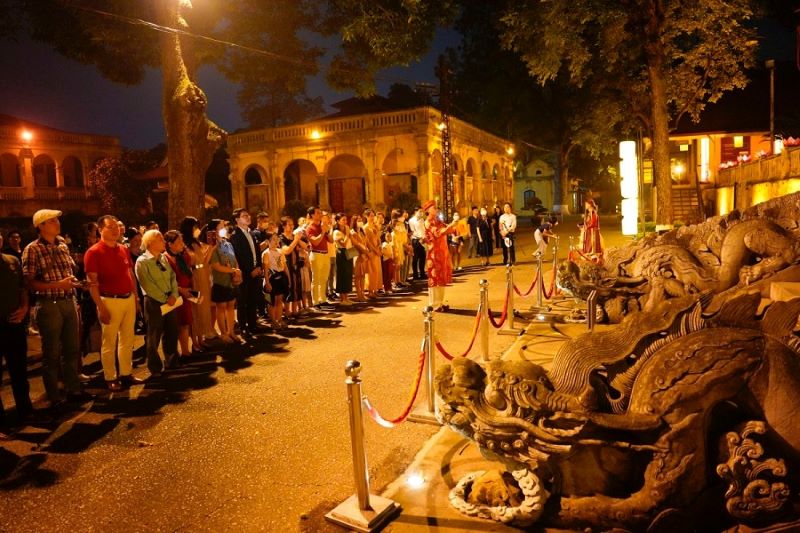
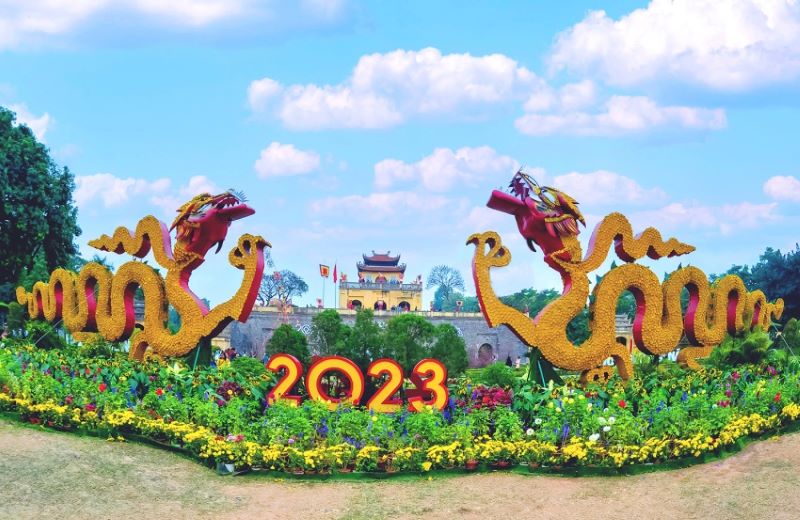

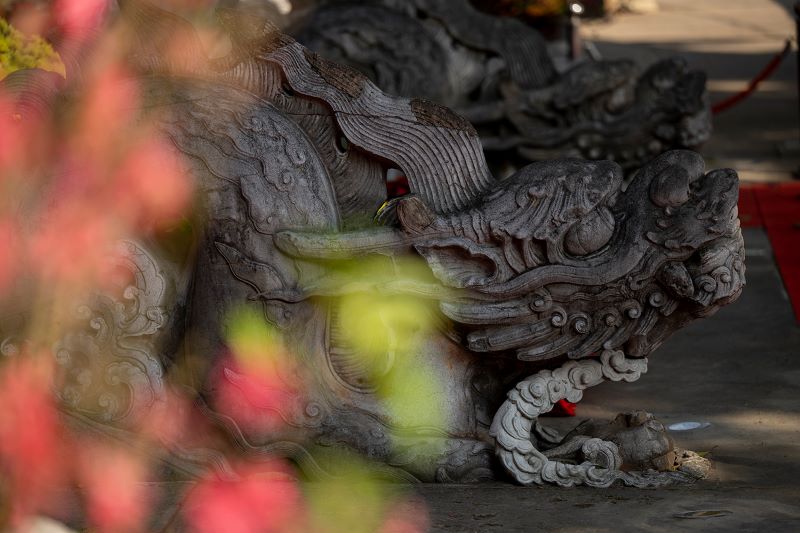
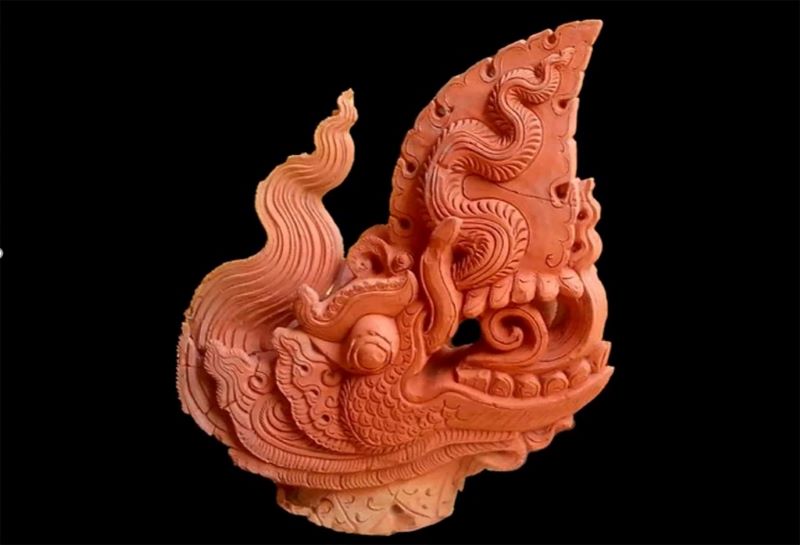
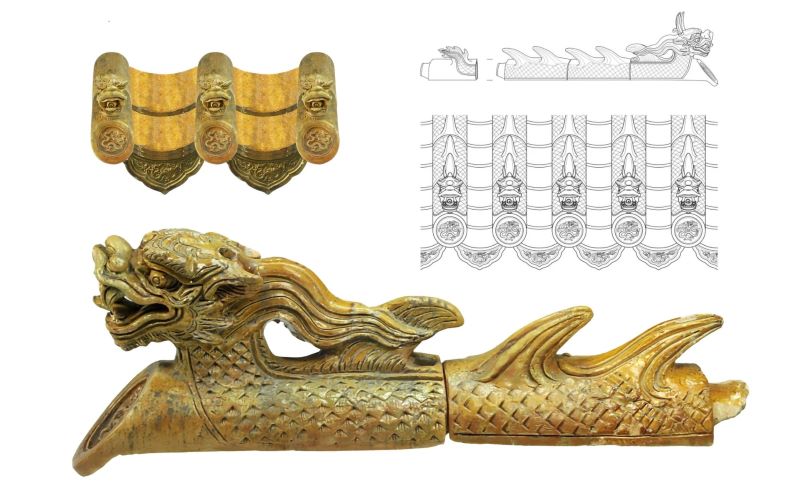
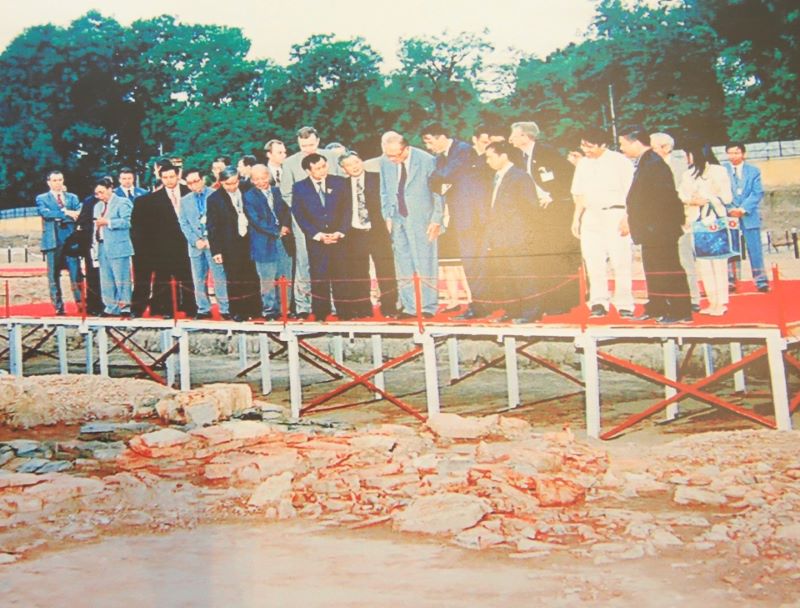
.jpg)
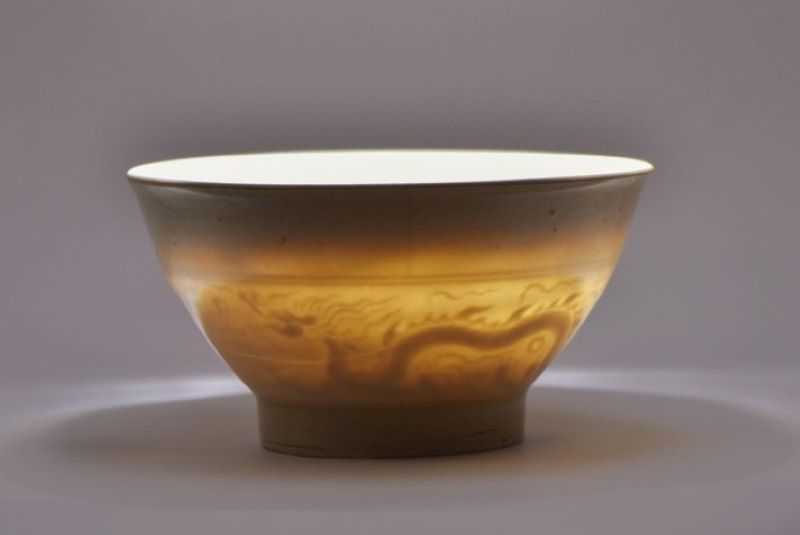
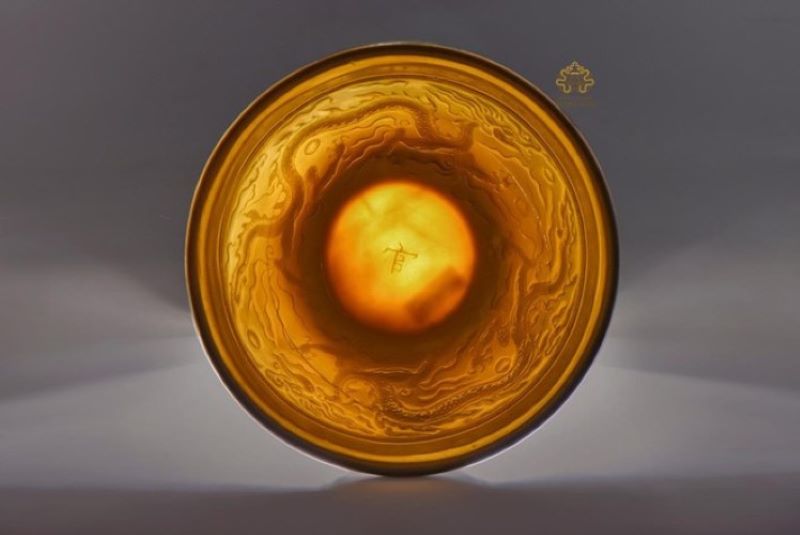
.jpg)










